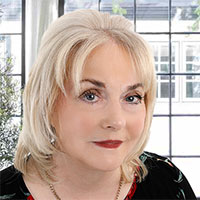Grasping the Significance of Spirit Summoning Your Name
 There is something truly captivating about the tranquility of night, when the world quiets down, distractions diminish, and our spiritual consciousness heightens.
There is something truly captivating about the tranquility of night, when the world quiets down, distractions diminish, and our spiritual consciousness heightens.
In these tranquil moments, there are times I sense a spiritual entity gently beckoning me. It’s not a sound I perceive with my physical ears, but a telepathic resonance that stirs my heart and mind, pulling me from the liminal state between wakefulness and slumber.
When this occurs, I remain vigilant because I understand that a significant message is on its way.
A number of my clients express having analogous experiences. They recount lying in bed, on the brink of slumber, when they suddenly perceive their name or sense a presence nearby. Some instantly feel a profound tranquility, while others experience shock, uncertain of what they have just felt.
If you have ever perceived your name being called in the stillness of the night, recognize that it is no coincidence and certainly not a figment of your imagination. These murmurs from the unseen realms invariably carry purpose. They serve as gentle yet powerful reminders that you are not alone on your life’s path. Your spirit team is seeking your attention, nudging you to listen, reflect, and embrace the wisdom they aspire to share.
Feeling apprehension when faced with the unknown is entirely natural. However, for those who perceive these calls, I extend this reassurance: these occasions are sacred. They are kind invitations to genuinely listen, to open your heart and mind, and to receive the guidance of your spirit helpers.
The messages can frequently be simple yet deeply meaningful: You are guided. You are protected. You are loved. We are here. At other times, they may convey specific guidance, urging us to focus on something unfolding in our lives. I have come to realize that these messages may manifest as subtly as a reassurance or as directly as an imperative call to action.
Your Spirit Guides and Angels will never let you down as you build a rapport with them. In the end, they may be the only ones who don’t let you down ~ Linda Deir
Types Of Spirit Messages
The nature of the message one receives can differ based on the source—ancestors, spirit guides, departed loved ones, or angels—all serving distinct roles in guiding and supporting us. I spent several years learning to discern who was contacting me, but through experimentation, I have learned to identify the unique “voices,” each resonating with distinct frequencies and energy signatures.
For instance, angels exude a sense of unwavering divine protection, compassion, and reassurance. My guardian angel has also imparted vivid premonitions and intuitive feelings over the years, steering me clear of potential dangers.
Spirit guides provide insight and wisdom that help me navigate challenges and opportunities. They specifically alert me to poor choices or possible diversions that do not align with my highest good. They also encourage me to further develop my abilities, refine my practices, and expand my spiritual understanding.
Deceased loved ones convey messages of comfort, reassurance, and cherished memories, reminding me that they remain close and watch over me. Some of these encounters have included apologies and acknowledgments intended to foster closure and facilitate karmic healing.
Ancestral guides, particularly those from my direct lineage, focus on soul contracts, karmic patterns, and ancestral legacies. They have imparted numerous insights about unresolved family wounds, inherited traumas, and navigating challenging relationships with specific relatives. Occasionally, their messages also serve as powerful reminders of the resilience and courage inherent in my lineage, igniting a renewed fire within me!
My Secret Security Detail
One of the most profound experiences of angelic guidance in my life happened years ago when I was gearing up for a court appearance with my abusive ex-husband. Fear and panic enveloped me; the mere idea of sharing a room with him was overwhelming. The night before, as I lay in bed, I suddenly received a message so clear it felt as though someone was right there with me:
“You are safe and you will be safe. Have no fear. We will be right beside you, around you, protecting you.”
A wave of soothing energy enveloped me, providing an immediate sense of inner strength and serenity. When I stepped into the courtroom the following day, it felt as though I was encased in an invisible protective shield. My ex-husband didn’t appear to notice me at all – as if I had become invisible to him!
Once the trial concluded, I felt a gentle intuition urging me to pause before departing. Then came another message:
“You can go now. He’s gone; he won’t see you. You are safe.”
In that instant, I understood that my spirit team had been by my side all along, akin to the security detail of a public figure, enveloping me with their love and protection. Nothing else mattered. The fear that had gripped me vanished, replaced by an unshakeable trust in the unseen forces accompanying me.
There is no difficulty that enough love will not conquer, no disease that enough love will not heal, no door that enough love will not open ~ Silver Birch
Gentle Whispers Of Love
Messages from spirit don’t always arrive during times of need or turmoil. Sometimes they manifest as soft whispers—gentle reassurances meant to remind us of our worth and purpose.
A client once relayed an experience to me: as she lay in bed one evening, she distinctly heard her name called. It was followed by a simple yet profound message:
“You are enough. You are loved just as you are.”
In that moment, it was precisely what she needed to hear. Those words shifted something deep within her, dissolving self-doubt and enabling her to embrace her intrinsic worth.
Urgent Calls To Action
Sometimes, the messages serve as a call to action that requires trust and bravery.
One of the most unexpected messages I ever received came at a time when I felt emotionally drained and financially strapped. Money was tight, my energy levels were at rock bottom, and I was simply in survival mode. Yet, the message I received was clear and resolute:
“Give.”
Give? Really? How could I give anything when I felt I possessed nothing? But the guidance persisted. I was urged to give whatever I could – my time, an encouraging word, a small act of generosity.
Trusting the message, I started giving in small ways. I donated blankets to those in need, offered words of encouragement to strangers, and gave away items I no longer used.
What followed was transformational. I witnessed the impact firsthand—the gratitude, the relief, the quiet joy in those who received even the simplest acts of kindness. And something else shifted. The energy of giving uplifted me, broadened my heart, and filled me with a renewed sense of purpose.
Shortly thereafter, my own circumstances began to change, as if the universe had acknowledged my willingness to listen and act.
Sometimes the answers are literally in our heads or hearts, but we are not acting on them or we are blocking ourselves. It may not be the ‘full picture answer’ we are asking for, but it might be the next step to lead us there ~ Nicole Drummond
How To Listen When Spirit Calls
Hearing your name softly spoken in the night is not a mere illusion – it is an invitation. A moment of sacred connection. A reminder that you are seen, recognized, and profoundly loved by the forces that guide you. Regardless of whether the incoming message conveys protection, encouragement, or a call to action, it is always given with the intention of securing your highest good.
Take a moment to pause and tune in. Here are some steps to facilitate your reception of the guidance offered:
Acknowledge the experience. Do not dismiss it as fanciful thinking, nor attempt to suppress it out of fear. Instead, identify it as an intentional communication from your spirit helpers.
Breathe and center. Close your eyes, inhale deeply, and allow yourself to become still. The more relaxed you are, the clearer the message can come through.
Ask for clarity. If the message seems unclear or incomplete, simply request more insight. Your spirit team is patient and will ensure that their guidance reaches you.
Trust the message. Whether it’s an affirmation of love, a warning, or a call to action, trust that it holds significance. Follow it with an open heart and mind.
Keep notes. Maintaining a journal of these experiences can aid you in recognizing patterns, uncovering deeper meanings, and strengthening your connection with your spirit team.
Thus, when you next hear your name whispered in the silence of the night, do not fear. Instead, breathe, listen, and open your heart. Your angels and guides are calling – how will you respond?
|
Sheri is an international psychic and angel reader offering clear insights regarding finance, career, relationships, manifesting your aspirations, and navigating life’s challenges. Since 2004, she has owned an International Spiritual Healing Centre where she conducts her Reiki practice—either working on clients or teaching them Usui Reiki levels. She utilizes her office space for readings conducted via mail, phone, chat, or in-person. Since 2008, she has refined her gifts on various psychic service websites, providing telephone, chat, or email readings. She also participates in a spiritual network for individuals who have experienced significant losses, applying her own firsthand knowledge of such tragedies. Sheri’s work is characterized as honest, compassionate, and transformative, and she wishes to see all her clients ascend to higher planes of spirituality and growth, ultimately transforming the world for the better. You can receive a psychic reading from Sheri at PsychicAccess.com. |
Understanding the Essence of Spirit Calling Your Name
Have you ever felt the sensation of your name being called out, only to find there’s no one around? This phenomenon, known as a spirit calling your name, has been reported by individuals across various cultures and throughout history. While it may appear eerie or disconcerting, there are multiple interpretations and beliefs revolving around this enigmatic occurrence. In this article, we will delve into the meaning behind a spirit calling your name and the diverse viewpoints that exist.
1. Spiritual Significance:
Numerous spiritual traditions hold that a spirit calling your name represents a form of communication from the spiritual realm. It is believed that spirits—whether they are departed loved ones, guardian angels, or other entities—are seeking your attention or delivering a message. Some view it as a sign of guidance, protection, or a prompt to focus on something significant in your life. It is seen as a means for the spiritual realm to forge a connection with the physical world.
2. Ancestral Connection:
In various cultures, a spirit calling your name is associated with ancestral spirits reaching out to you. These spirits are believed to be your ancestors, trying to establish a connection or impart guidance from the afterlife. It is perceived as a way for them to remind you of your origins, seek your attention, or provide their support and wisdom.
3. Psychic Ability:
Another viewpoint posits that hearing your name being called by a spirit may indicate psychic abilities or mediumship. Some individuals possess heightened sensitivity to the spiritual world and are more inclined to experience such phenomena. It is thought that these individuals can perceive and communicate with spirits, rendering them more susceptible to hearing their name being summoned.
4. Vibrational Energy:
From a metaphysical angle, hearing your name being called by a spirit could relate to the vibrational energy of your name. Names carry unique frequencies and vibrations believed to impact our lives. It is thought that spirits may utilize these vibrations to grab your attention or establish a connection. This viewpoint implies that the spirit calling your name is striving to align or resonate with your energy.
5. Psychological Interpretation:
While spiritual and metaphysical interpretations are commonly accepted, some psychologists propose an alternative perspective. They suggest that hearing your name called could stem from auditory hallucinations or be a trick of the mind. Such hallucinations can arise from various factors, including stress, fatigue, or specific mental health conditions. In this view, the experience is regarded as a product of the brain rather than a spiritual phenomenon.
In summary, the meaning behind a spirit calling your name is subjective and varies based on cultural, spiritual, and personal beliefs. Whether you regard it as a spiritual connection, ancestral guidance, psychic ability, vibrational energy, or a psychological occurrence, it is crucial to approach the experience with an open mind and respect for diverse perspectives. No matter the interpretation, the phenomenon of a spirit calling your name remains a captivating and mysterious aspect of human experience. Continue reading















